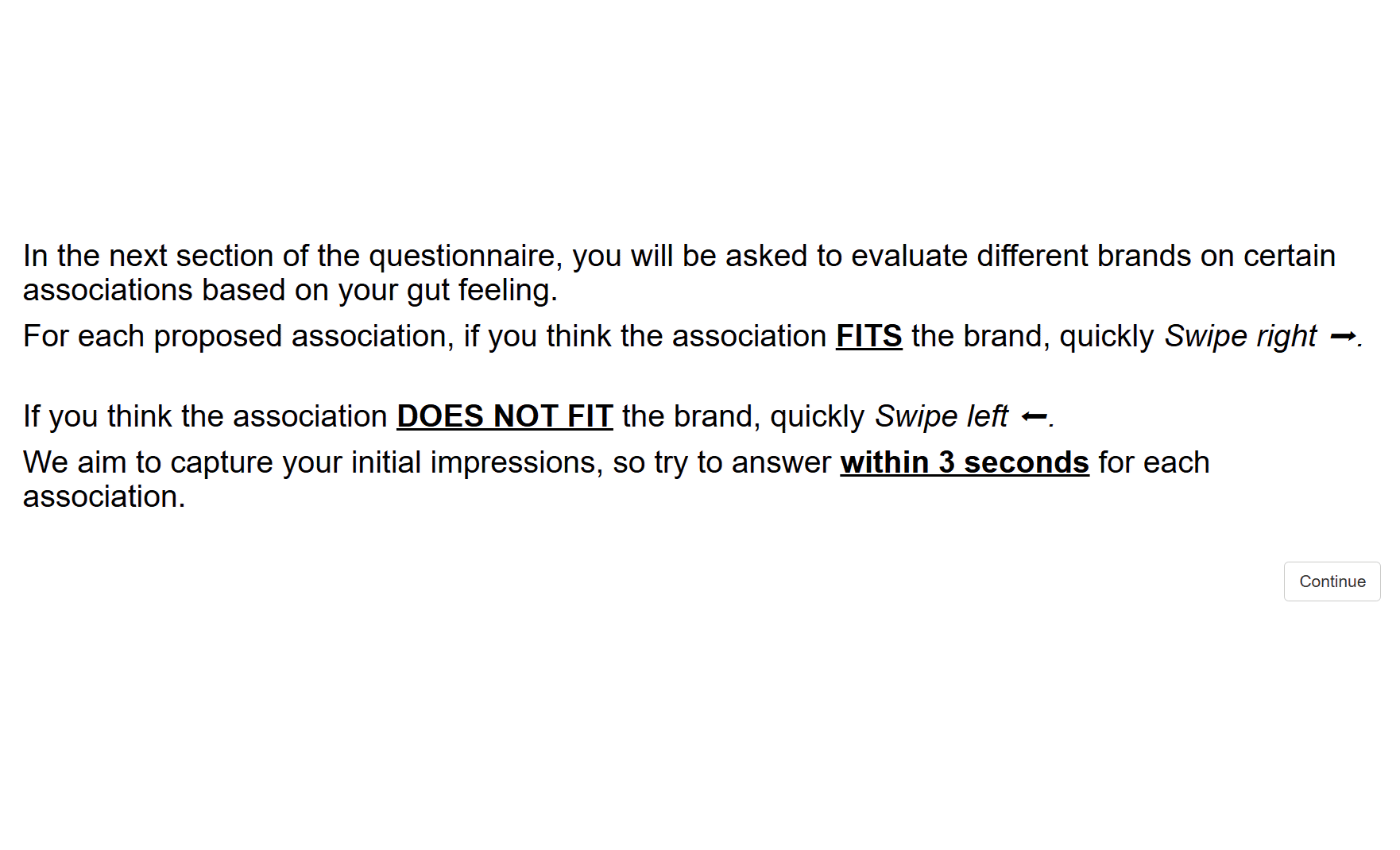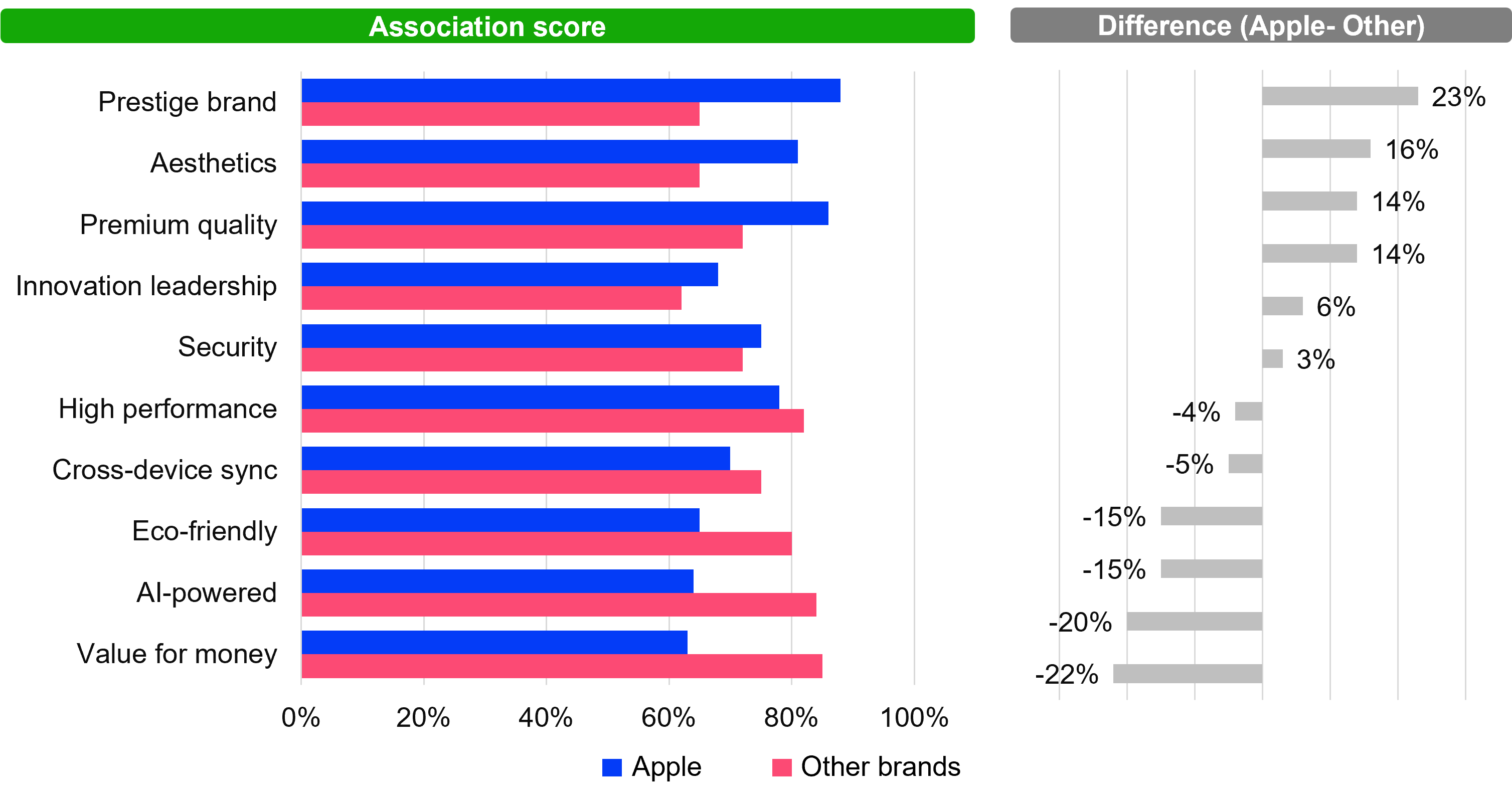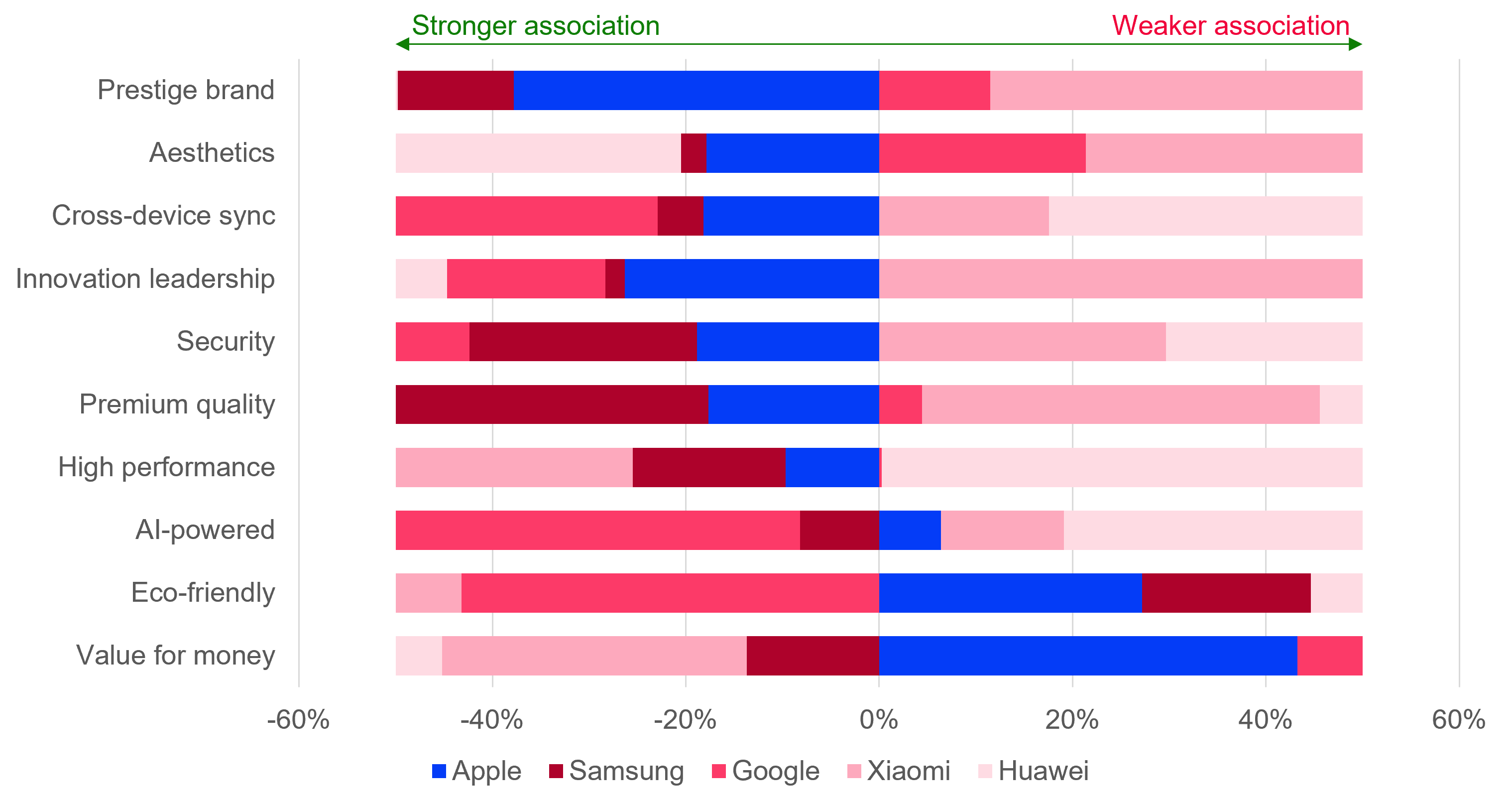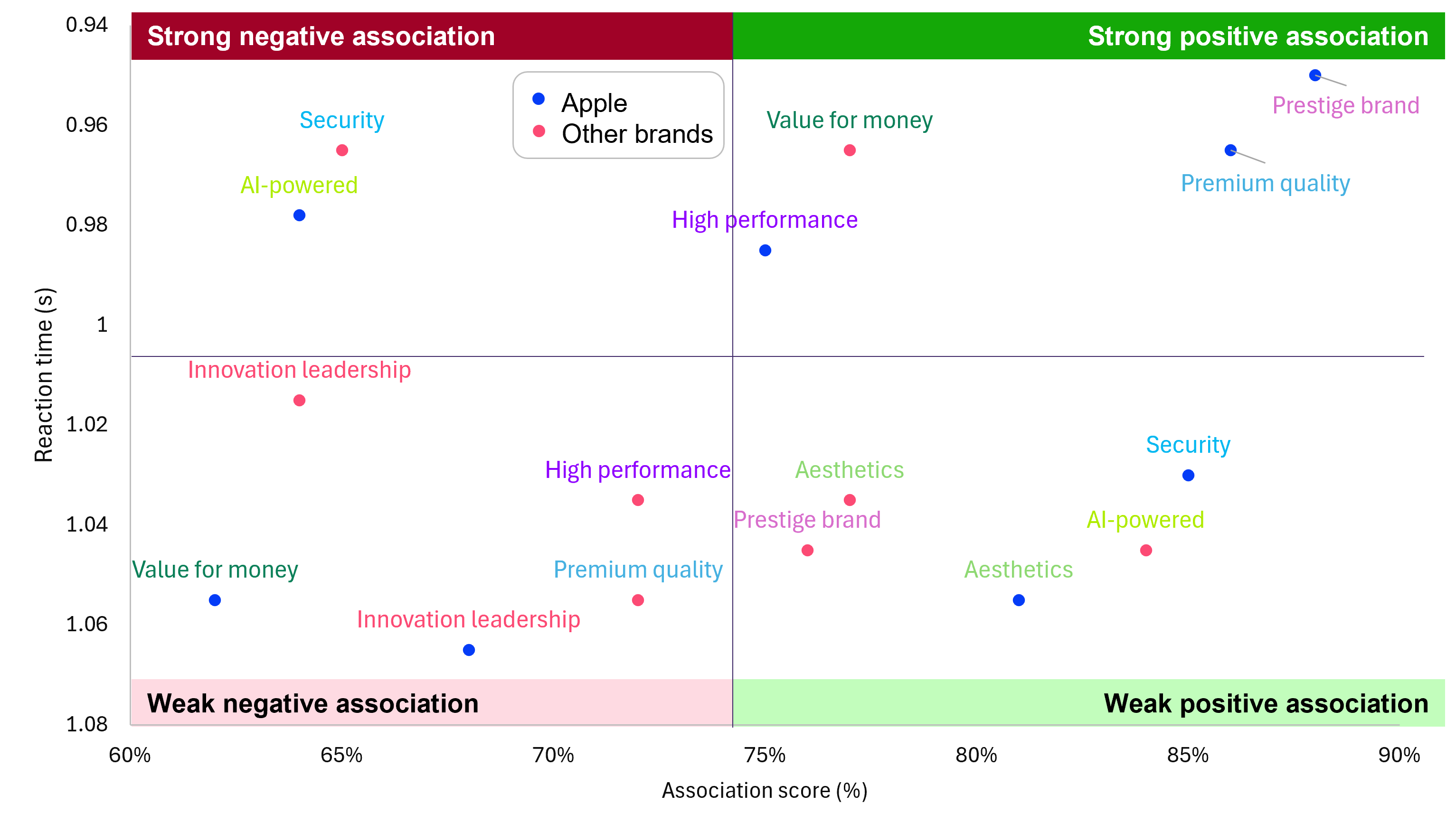Core benefits of Implicit Testing

Enhance product and concept testing
Complement existing research methods by measuring automatic consumer reactions to new products and concepts.

Optimise brand image and positioning
Uncover and measure the strength of automatic associations with your brand relative to competitors.

Understand non-rational consumer decisions
Identify the emotional and intuitive drivers of consumer decision-making to develop more compelling offerings.

Reduce social desirability bias
Minimise the chances of respondents adjusting their survey answers to appear more socially acceptable.
How implicit testing works
The implicit testing process typically involves the following steps:
- Respondents view a stimulus (such as brand logos, product concepts, or advertisements) paired with an attribute word (such as "premium," "affordable," or "innovative").
- Respondents quickly indicate whether they associate the attribute with the stimulus by pressing designated keys or buttons.
- Each pairing appears briefly before automatically advancing to the next combination.
- The system captures each response and measures reaction times.
Faster responses indicate stronger automatic associations, while slower responses suggest weaker mental connections. This creates quantifiable data showing which associations are most deeply embedded in consumers' minds.

A versatile, fully customisable implicit testing solution
Whether your goal is to strengthen brand positioning, evaluate product concepts, test advertising effectiveness, or assess messaging claims, the Conjointly platform accommodates different stimulus formats, from static images to videos and text-based content. Other forms of implicit testings can also be implemented based on your research needs.

Measure the relative strength of consumer associations through net reaction time
Implicit testing reveals not only which attributes consumers associate with your stimuli, but also how deeply these associations are anchored in their subconscious minds. The analysis considers two key metrics:
- Response direction: Whether participants associate the attribute positively or negatively with the stimulus, revealing the nature of the automatic connection.
- Response speed Faster responses indicate stronger automatic associations, while slower responses suggest weaker mental connections.
This provides clear, quantifiable insights into how concepts, messages, or creative elements are received by your target audience, and which variations perform strongest across different attributes.

Compare strength of consumer associations across brands
Gain a comprehensive view of your brand's associations compared to competitors by analysing both how often consumers see a fit with attributes and how quickly they make these decisions. This quadrant analysis reveals four distinct types of associations: strong positive (high fit, quick responses), weak positive (high fit, slower responses), strong negative (low fit, quick responses), and weak negative (low fit, slower responses).
The analysis can also identify which brands cluster together based on their association patterns, helping you understand your closest competitors in terms of consumer perception.

Source the exact sample you need swiftly and reliably
Consumer surveys often require a sample of hundreds of consumers from your product category, including current users and potential buyers. With access to millions of survey participants from around the globe, Conjointly provides high-quality sampling options to match your specific needs.
Conjointly has achieved ISO 20252:2019 certification for its sampling services (Annex A), confirming that both fully-managed Predefined panels and automated Self-serve sample meet international standards for market research quality.

Trust expert researchers at Conjointly to deliver advanced product and pricing research
From experimental design and set up, data collection, analysis and presentation, Conjointly’s experts are here to help.
